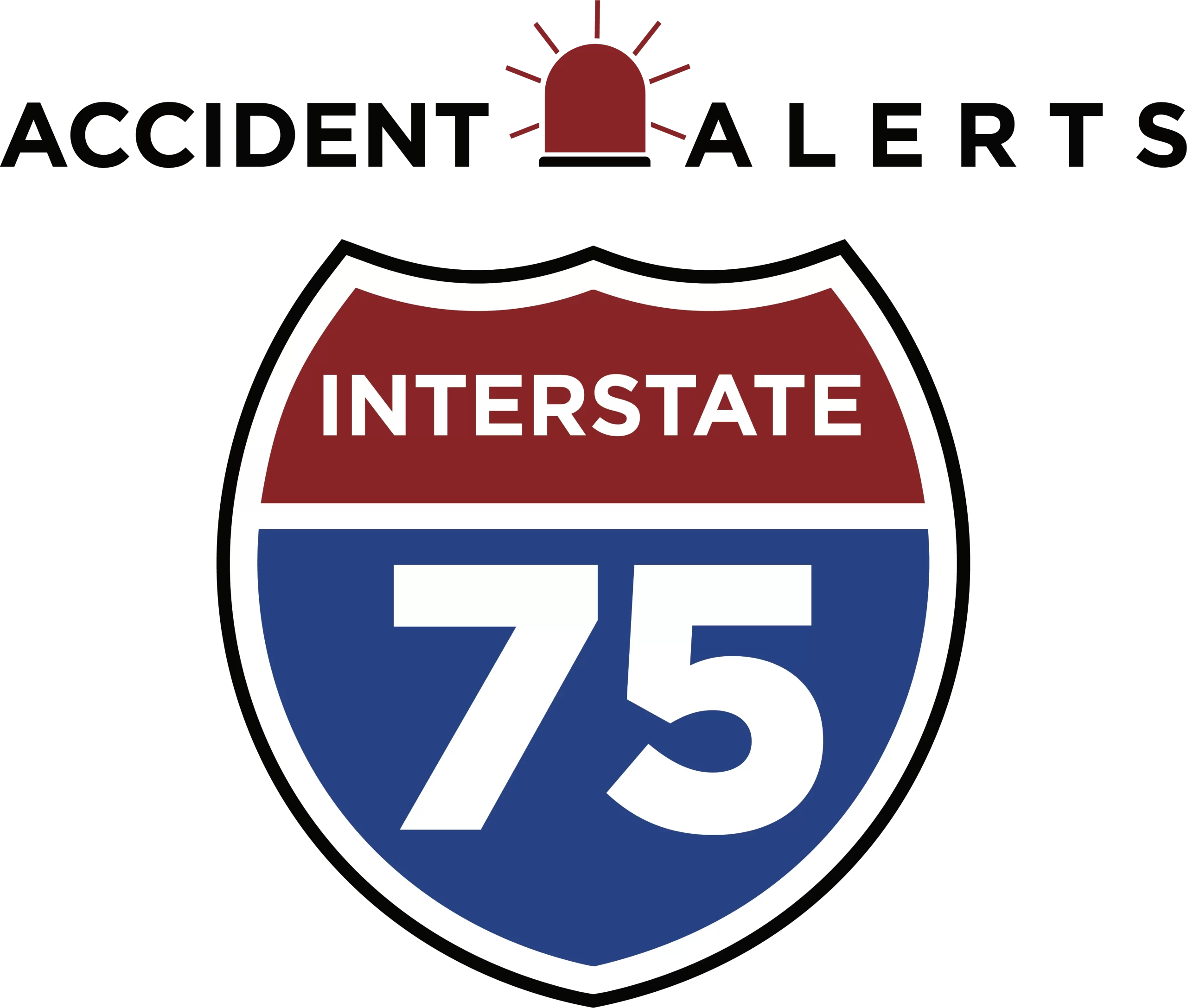
Truck Accidents on I-75: Liability & Victim Rights


Interstate 75 (I-75) stands among the nation’s busiest and most essential freight corridors, stretching nearly 1,800 miles from Michigan’s Upper Peninsula through Ohio, Kentucky, Tennessee, Georgia, and Florida. The route links major industrial and shipping hubs, making it a lifeline for long-haul trucking and supply-chain logistics across the Midwest and Southeast.
However, that same concentration of commercial traffic also makes I-75 one of the most dangerous highways for both truck drivers and everyday motorists. In this article, you will find information about truck crashes on Interstate 75: the main causes of these accidents, the most important steps victims should take after being involved or hurt in these crashes, and more.
Common Causes of Semi-Truck Crashes on I-75 
Over the past decade, I-75 truck accidents have represented a large share of fatal and severe-injury crashes throughout the region. According to the Federal Motor Carrier Safety Administration (FMCSA), large trucks were involved in 13.5 percent of all fatal traffic crashes nationwide in 2021, accounting for 4,714 deadly incidents out of 34,439 total crashes. Many of these tragedies occur on high-volume freight corridors like I-75, where truck traffic is constant year-round.
The FMCSA’s Large Truck and Bus Crash Facts 2021 report shows that truck miles traveled and crash involvement rates have risen steadily, especially in states with dense shipping activity. From Atlanta’s gridlock to Tennessee’s fog-covered valleys, I-75 challenges even the most experienced commercial operators. When an 80,000-pound semi-truck collides with a passenger vehicle, the outcome is often devastating.
Accidents involving large commercial vehicles rarely happen by chance. They often stem from systemic problems, human error, or violations of federal safety regulations. Some of the most common causes of semi-truck crashes on I-75 include:
- Driver fatigue: Despite strict FMCSA hours-of-service limits, pressure to meet delivery deadlines often pushes drivers to stay on the road too long. Fatigue slows reaction times and impairs judgment, leading to drift-offs and rear-end collisions.
- Distracted driving: Smartphones, GPS devices, and dispatch systems can divert a driver’s focus for seconds—enough time to cause a high-speed crash.
- Improper loading: Overweight or unbalanced cargo increases rollover risk, especially on curves or during sudden lane changes.
- Mechanical failures: Worn brakes, tire blowouts, or defective couplings can cause a semi to lose control without warning.
- Aggressive or unsafe driving: Tailgating, speeding downhill, and abrupt lane changes are frequent contributing factors along steep grades and congested city limits.
The trucking law I-75 framework requires carriers to follow both federal and state safety rules, including routine inspections, driver qualification standards, and maintenance documentation. When companies cut corners on these obligations, they can be held liable for resulting injuries or deaths.
Determining Liability After a Truck Collision
Truck crashes differ from ordinary car accidents because multiple parties may share responsibility. Identifying all liable entities is key to a successful claim.
Depending on the circumstances, liability can fall on the truck driver for negligence, such as speeding, distraction, or fatigue, or on the trucking company for failing to train drivers, pushing unsafe schedules, or neglecting maintenance. The cargo shipper or loader may also share blame if improperly secured freight contributed to loss of control, while parts manufacturers or maintenance contractors can be liable if a mechanical defect played a role.
In some cases, roadway design or construction hazards along I-75 may also contribute, introducing potential government liability. Because these crashes often involve multiple insurers and corporate layers, victims benefit from legal counsel that understands both trucking regulations and the jurisdictional nuances across I-75’s multi-state span.
Steps Victims Should Take After an I-75 Truck Accident
The moments following a truck collision are chaotic, but taking the right actions can preserve critical evidence and strengthen future claims. Victims should:
- Call 911 immediately and report the location, direction of travel, and number of vehicles involved.
- Seek medical attention even for seemingly minor injuries, as internal trauma may not appear right away.
- Document the scene by photographing vehicles, skid marks, road conditions, and weather, if it’s safe to do so.
- Collect information, including the truck’s DOT number, driver’s name, company, a copy of the police report, and witness contacts.
- Avoid discussing fault or giving detailed statements to insurance representatives without legal guidance.
Commercial trucking companies often deploy rapid-response teams to gather evidence and limit liability within hours of a crash. Retaining an attorney quickly ensures that victims have their own advocate to secure black-box data, driver logs, and maintenance records before they can be altered or lost.
How Trucking Law Protects Victims on I-75
Trucking law I-75 cases operate under both federal regulations and state negligence laws. The Federal Motor Carrier Safety Regulations (FMCSRs) outline mandatory safety practices, including limits on driving hours, alcohol and drug testing, and maintenance standards. Violations of these rules can serve as powerful evidence of negligence.
In addition, state laws along I-75—such as Georgia’s direct-action statute and Florida’s comparative negligence rules—affect how damages are pursued. Victims may recover compensation for medical expenses, lost income, property damage, and pain and suffering. In severe cases involving reckless or willful misconduct, punitive damages may also apply.
Attorneys specializing in interstate trucking litigation coordinate with accident reconstruction experts, review electronic logging device (ELD) data, and analyze load manifests to establish liability and strengthen the victim’s case.
Preventing Future Semi-Truck Crashes
Reducing truck accidents on Interstate 75 requires cooperation among drivers, companies, and enforcement agencies. The FMCSA continues to enhance safety through electronic logging, stricter compliance reviews, and roadside inspections. Meanwhile, state departments of transportation have introduced technology such as weigh-in-motion systems and real-time traffic alerts to flag high-risk conditions.
For motorists, defensive driving remains the best safeguard. Avoid lingering in truck blind spots, maintain extra distance during merges, and never cut in front of a semi on downgrades or ramps. Small behavioral changes can dramatically reduce the risk of catastrophic outcomes.
Legal Guidance for Victims of Semi-Truck Crashes on I-75
Truck collisions often leave victims facing mounting medical bills, emotional trauma, and uncertainty about who will cover their losses. If you or a loved one has been injured in a semi-truck accident along I-75, seeking professional help early can make a critical difference. We can put you in touch with an experienced I-75 truck accident attorney who can investigate the crash, identify responsible parties, negotiate with insurers, and pursue full compensation on your behalf.

